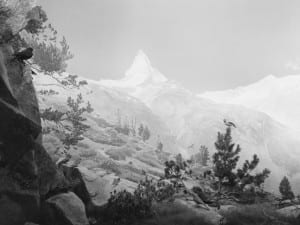As a 2 month retrospective of Roman Polanski’s films continues to play out on screens at the BFI throughout February, the real gem of this event takes place in a modest and discreet space in the atrium of the Film Institute: the poster exhibition Roman Polanski Actor. Director.
Selected works from the original large-scale exhibition, which has visited many countries over the past few years, feature international film posters and lobby cards that have been acquired on loan from the archives of the Muzeum Kinematografii in Łodz, Poland. Sampling from the museum’s vast collection of Polanski’s film posters, the BFI have highlighted three of Polanski’s critically acclaimed films: Repulsion (1965), Chinatown (1974) and Tess (1979).
The use of ambiguous images juxtaposed to hand-lettering and printed titles, as well as the layering of images complemented by sporadic text displayed through bold luminous colours, contributes to create alternative posters that offer a highly stylized view of Polanski’s films. These radical interpretations produce high quality, innovative art that is clearly more artist-driven than studio-driven, thanks to the creative freedom given to the individual voices of poster designers. At the same time, they loosely interpret the story of the film being advertised, relying heavily on the art work to draw in viewers.
The most daring of posters on display are those of the films Repulsion (1965) and Chinatown (1974), where the influence of Abstract Expressionism, Art Deco and Post Bauhaus has heavily influenced the designs. The mysterious tension created by the surreal shapes and silhouettes used to publicise Polanski’s realism-rooted films makes one feels like he is re-living the director’s psychological thrillers and dramas through highly illustrative, stylistic nightmares.
The posters of Polanski can be traced to the time and place he was born. Struggling to adjust to an oppressive communist society during the Soviet Union era, a young Polanski found solace in cinema as a film student, as did many of his Polish colleagues. Most notably, this exhibition holds the works of Andre Krayewski and Jan Lenica, who studied at the influential Polish School of Posters that was set up in the 1950’s and went on to produce some of the world’s finest and most avant-garde movie posters.
This rare display on London territory is not only recognising Polanski’s international artistic achievements, but also shines a light on how designs can be tailored to audiences in different countries around the world, from Japan to France, Germany and the USA. This exhibition is definitely a valuable source of inspiration for those looking to further inform and challenge their approach to the Art of Marketing Films, at a time in which artistic vision is often replaced by designs the main purpose of which is to reach out to a wider audience.
Frances Cooper
Roman Polanski, 1 January until 28 February, BFI, Southbank, South Bank, Waterloo,London, SE1 8XT. www.bfi.org.uk
Credits:
1. Chinatown, from the archives of the Muzeum Kinematografii in Łodz, Courtesy BFI, London




